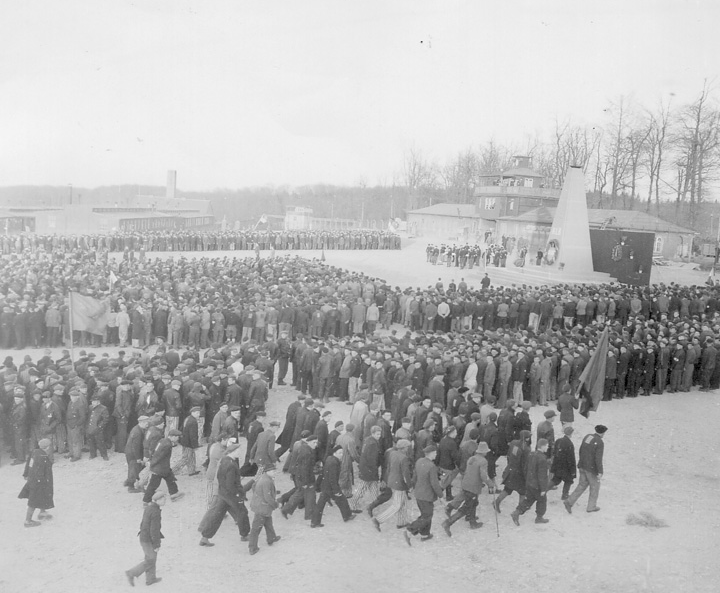Note: In 2021 I’ll publish one blog post per week. Here’s entry 17 of 52.

This post is a reflection on my failed, and unfortunately short-lived, attempt to help #AbolishICE in the summer of 2018. When considering the horrifying cruelties of the camps of U.S. Immigration and Customs Enforcement (ICE), an agency under the federal Department of Homeland Security, I think it’s important to look at the experiences of everyday activists and what we’re trying — or shrugging off trying — to do. Maybe then we can reboot our efforts and try again, better this time.
For those who think calling the ICE centers concentration camps is extreme, consider the words of multiple Holocaust survivors in 2019 (Rene Lichtman, Ruth Bloch, Bernard Marks): ICE is equivalent to the Gestapo, and their current ‘detention centers’ really are concentration camps where genocidaires crush minorities. The sadistic abuse by la migra at these camps is well-documented here by Gabriela C. Romeri. Borrowing from her article, the DHS’s own oversight reports found that children imprisoned at the camps reported wide-ranging abuses: officials pointing their guns at the children, shooting them with tasers for amusement or punishment, hitting or kicking them, and threatening them with rape or death. Additional reported abuse included: agents stomping children; punching children in the head, sometimes repeatedly; kicking one child in the ribs; tasering several children; denying them food and forcing minors into stress positions. Further, children held in freezing rooms with no blankets, food, or clean water; forced to sleep on concrete floors or share overcrowded cells with adult strangers; denied necessary medical care; bullied into signing self-deportation paperwork; and subjected to physical assault and rape. Mothers of infants were denied diapers; trashcans were removed from crowded holding cells and feces and other fluids were seen along the floor. The Associated Press reported in September 2018 that federal Health and Human Services (somehow or supposedly) “lost track” of 1,488 migrant children — a number that must be no coincidence: 14 represents the Fourteen Words white supremacist slogan, and the number 88 is HH (H is the eighth letter of the alphabet), a common code for Heil Hitler. Furthermore, Nazis frequently combine 14 and 88 into 1488. Presumably many of the “lost” children were enslaved (trafficked). The pedosadist likes of Jeffrey Epstein do not obtain their slaves singlehandedly; the powerful trafficking networks are planetwide organized crime. They have to grab kids from somewhere, and ICE camps along with everything surrounding them make for perfect crime scenes.
What the IBM-Nazi collaboration says about the importance of knowledge control

It’s a little, but increasingly, known fact that the International Business Machines Corporation (IBM), popularly recognized for products such as the Deep Blue chess-playing supercomputer and the first-rate line of Thinkpad consumer laptops (prior to Lenovo acquiring them in 2005), aided Nazi Germany in carrying out the Holocaust. The collaboration, overseen by IBM in New York City, was carried out in Germany by IBM subsidiary the Dehomag Corporation. Dehomag’s punch-card tabulating machines, called Hollerith machines, were installed at the major Nazi concentration camps, where SS personnel, following training by IBM who knew what was going on, used the tabulators to track information on prisoners. Arrivals, transfers, deaths, occupations, and slave labor details were all catalogued on IBM Hollerith machines. The SS also supplied Reich central authorities in Berlin with that data on an ongoing basis.
In addition to the outright horror, killing millions relatively quickly is a complicated logistical challenge. As explained in investigative journalist Edwin Black’s book IBM and the Holocaust: The strategic alliance between Nazi Germany and America’s Most Powerful Corporation, the Hollerith machines helped Nazi leadership “prioritize, schedule, and manage the seemingly impossible logistics of genocide across dozens of cities in more than twenty countries and territories. It was not just people who were counted and marshaled for deportation. Boxcars, locomotives, and intricate train timetables were scheduled across battle-scarred borders—all while a war was being fought on two fronts. The technology had enabled Nazi Germany to orchestrate the death of millions without skipping a note.”

The Reich using Hollerith machines at their concentration camps representated a huge, profitable commercial victory for Big Blue. Further, IBM didn’t sell the machines to the Nazis, but instead, merely leased them (as in today’s corporate software ecosystem where endusers rarely own much but typically just lease ‘their’ apps, ebooks, etc). The leasing arrangment forced the Nazis into dependency on Dehomag/IBM, just as individuals and schools/universities and even governments presently are dependent on, rather than governing over, Silicon Valley. In 1934, Dehomag’s director, Willy Heidinger, bragged (in a statement that emphasizes with astonishing bluntness the role of medical control):
We are recording the individual characteristics of every single member of the nation onto a little card […] We are proud to be able to contribute to such a task, a task that makes available to the physician [i.e. Adolf Hitler] of our German body-social the material for his examination, so that our physician can determine whether, from the standpoint of the health of the nation, the results calculated in this manner stand in a harmonious, healthy relation to one another, or whether unhealthy conditions must be cured by corrective interventions […] We have firm trust in our physician and will follow his orders blindly, because we know that he will lead our nation toward a great future. Hail to our German people and their leader!
Dehomag was directed from New York City by IBM head Thomas J. Watson. Between 1933 and 1940, Watson courted Nazi business and made Hitler’s regime dependent not just on the leases of Hollerith machines, but also on the unique punch-card paper IBM sold. When the Nazis ran out of that fluid capital, they had to replenish their stock of paper by going as customers to IBM, who, at the same time as its employees even had sales quotas for working with the Reich, somehow continually managed to evade the Treasury Department in D.C., a top-echelon bureau formally tasked with stopping domestic firms from trading with official enemies. Hmm, curious, that. The business between IBM and the Nazis kept going: Dehomag serviced/repaired the Hollerith machines on site at the concentration camps regularly. Even food allocation (i.e., who would starve and who would be fed) was managed by the Nazis using an IBM proprietary database system. Unless humanity elects to establish a universal database, a global commons, owned by everyone, for organizing and sharing public data, we’ll continue to have such opaque databases of proprietary control as the Nazi’s, where injustices occur aided by secrecy. (Of course, injustices also occur in plain sight, especially since nowadays people lack shame or a sense of duty to the vulnerable, and have trouble putting the disparate puzzle pieces together to recognize that their emotional responses have been conditioned from above; it’s ‘secrecy’ through flooding everyone with distracting trivia and corporate entertainment.)

Did IBM face consequences? As World War II progressed, Big Blue sold Hollerith machines to the Allies also, playing both sides. After Armistice Day, no IBM executives were charged with war crimes, and their profits from working with the Axis were shielded from reparations. Not only that, but Hollerith machines were used to handle records at the Nuremberg Trials — Big Blue playing both sides and the referees too — and IBM formally requested compensation for its Hollerith machines getting damaged during the war. Legal cases since have had mild success but nothing full, due to reasons such as statute of limitations. IBM’s business steamrolled on: not as IBM contracting with the powers that be, which is the usual phrasing, but IBM (and big tech today) as the power that is, needing to trade its products somewhere anywhere, and looking down to the lowly governments below as dependent customers. Two examples follow. Victor Marchetti and John D. Marks’ The CIA and the Cult of Intelligence (1974) — an interesting instance of a U.S-published book that has been censored; my paperback copy has black ( DELETED ) marks throughout — says “The first step in the [CIA’s] evaluation process [for obtaining a spy] is to run a ‘namecheck,’ or trace, on the person, using the CIA’s extensive computerized files located at headquarters in Langley [Virginia]. This data bank was developed by International Business Machines exclusively for the CIA and contains information on hundreds of thousands of persons.” Investigative journalist Tim Shorrock’s book Spies for Hire: The Secret World of Intelligence Outsourcing (2008) mentions IBM’s work “as a major provider of computer systems to the Pentagon and the NSA.” Have the highest levels of warfighters ever really been defeated?
What does all this mean — is it just a random contingency that tech companies happen to be so powerful, and is interest in the Internet and technology a mere “subgenre” of anarchism or activism, less important than, say, the heart-pounding physicality of black bloc streetfighters skirmishing with cops? After all, Edwin Black, author of IBM and the Holocaust, wrote “Make no mistake — The Holocaust would still have occurred without IBM. To think otherwise is more than wrong. The Holocaust would have proceeded — and often did proceed — with simple bullets, death marches, and massacres based on pen and paper persecution.” Is the difference merely something quantitative, that the technology enabled the Nazis to automate genocide and to massively multiply the killing, murdering millions relatively quickly with cold efficiency, beginning a new era of military intelligence, two words combined that can’t make sense?

It’s more than quantity: the IBM-Nazi use of Hollerith tabulating machines were the contemporary beginnings of yoking genocidal domination based on knowledge together with mass data. Although you might debate the particulars, big picture wise, human behavior has always stemmed from knowledge: everything else is downstream. It might appear that the celebrity who’s the sexiest calls the most shots, but emanating like magic from the high, remote towers of the intelligentsia, the definitions of sexy and celebrity (and whatever else) are too often imposed, not from a community’s storytellers and mythmakers who must answer to their neighbors, but from above. Similarly with initial definitions and emotional responses around things like black blocs and cops. Community storytellers lack the amplification and computing power of the powerful intelligentsia-magicians. To outsmart, or route around, the force-multiplying technology wielded by the supranational powers (especially spy agencies), is like seizing a staff away from a wizard, or besting a wizard in spellcasting. If the public wins at this magical duel over abstractions (and the logic systems for organizing our abstractions and connecting them to the physical realm, i.e., software, networks, etc.), then control of mythmaking and other knowledge creation finally return to the public’s control, and hence the public regains control of all that which is downstream as well. That controlling the fount yields the most power must have been why, for instance, Winston Churchill was obsessed with, and kept close tabs on, the Bletchley Park professor types, including Alan Turing, whose organization after World War II grew into GCHQ, the British equivalent of the NSA; unlike many other British leaders in his orbit, prime minister Churchill intuitively understood how powerful this wizard-staff of software structuring of abstraction information was and would become. Computer software isn’t just goofy game apps on a smartphone: it’s ‘instruction tables’ (to use Turing’s phrase that later was changed into ‘software programs’) for logically processing information itself, and that can translate into knowledge itself, which not spy agencies from above, but the public from below, must control, if control over everything else is sought. Such a picture, introduced to the public from 2010 to 2012 by WikiLeaks Central (an adjacent but separate organization from WikiLeaks, including in terms of ideas and agenda), was challenging to see a decade ago, but based on offline conversations in Seattle anyway, with those roughly ages 25-30, I imagine many bright young people really into the Internet can see it more easily these days. It’s become all the more obvious, at least in broad strokes. Then again, it’s a picture that, though comprehensive and incisive, can quickly be overwritten for some when the louder, seemingly more accessible advertisements from various ideologies (e.g., Marxist groups) pop up, as they do nonstop here in Seattle, diverting people from taking on corporations and spy agencies (through mechanisms such as lawsuits, the Magnitsky Act, inventions, mutual aid infrastructure, etc.), toward smaller goals regrettably fleeting.
Now imagine refusing a defector from the IBM-Nazi collaboration

Pretend it’s the early 1940s and a higher-up at IBM’s German offices, perhaps one of the lowest executives in the C suite, goes to meet with the Nazis about more Hollerith machines they want for a planned concentration camp. The Nazis give him completed paperwork describing plans for the camp and what they expect from the Dehomag tabulators. Walking back to his office, our fictional employee, sickened by his collaboration with the Reich (sickening which began a few months back), decides to defect to the public. He worries passersby can see the growing sweat stains on his suit. Hell, he worries he’s going to bang right into another pedestrian, because he can’t focus on walking correctly for all the thoughts wheeling in his head: about the opposition newspaper he sometimes bought when no one was looking (telling himself it was out of mere curiosity), about an antifa group he heard gathered sometimes in the back of a nearby art gallery, and about his family, especially his son, who though ten and unusually talented at the violin — which won him enrollment at a special music conservatory — still has trouble reading simple German, and always seems disconnected from everything around him.

That night, the defector pretends to his wife over the dinner she cooked that he has back pain forcing him to stand and not sit nor sleep. Then he stays awake into the small hours, drafting an anonymous letter stating his severe disagreement with IBM’s Dehomag. It’s something of a rant; it doesn’t mention the plans, nor does it make any threats to his employer. But it’s powerfully worded, and it does demand Dehomag drop its relationship with the Nazis. Between the lines, the letter conveys: Or else. He isn’t quite sure or else what, but then again, he’s now not quite sure how far he wants to go with this, or if he’ll chicken out and change his mind. Maybe it’s all just crazy thoughts arising from the back pain he really does sometimes have? And his son does love the conservatory — music is the only time he’s not spaced out. But the sun comes up and, after downing some coffee and putting on a suit without sweat stains, our defector leaves home for the office of the opposition press newspaper. His conversation with the editors, filled with specific details, lead them to conclude he’s telling the truth about who he is and the planned concentration camp, and the editors print his anonymous letter as soon as possible.
Switch from our defector focal character, to the back of the art hall, where indeed an antifa collective comes together the next afternoon. There are just three of them, one woman and two men, relatively inexperienced and young, not at all the hardened crew the defecting executive imagined. Perhaps against their better judgment, they’re proudly discussing the successful sabotage another antifa group apparently carried out last week, covertly cutting signalling cables. They lament reports of human cargo packed into freight cars, of people beat with batons. Then one of the men asks if the others saw the anonymous letter in the opposition newspaper. They haven’t, so the guy fills the rest in. He’s the most ungainly in the group, bookish and a little overweight. He says, “Through our contacts, we should find the person who wrote the anonymous letter, and help him break from Dehomag. He probably knows a lot. He probably has a lot of coworkers sympathizing with him. Fucking up Dehomag could really save lives, protect the vulnerable from the Reich.”
“What, are you joking?” says another of the men. “Those bourgeois businesspeople. They wear fancy suits, they have fancy salaries, and their kids go to fancy schools. I don’t want to do anything that benefits them.”
The ungainly guy blinks, staring startled at the other two as if they must know something he never has. Maybe the other man is simply dissing him in an effort to impress the woman (who’s turned aside to straighten a portrait hanging on the wall), but so petty a motivation is typically beyond his own rationale. He dismisses the possibility from his mind, which suddenly feels destabilized, dizzy somehow. There simply must be a logical misunderstanding somewhere. “No,” he says, “the beneficiaries of this effort would be the concentration camp prisoners, not the letter-writer.” The other man repeats himself: “I’m just not going to help those bougie business types.” Later the ungainly guy thinks, he could have added, The letter-writer is a means to an end: not palling around with him, but saving the victims. Besides, who knows what this letter-writer is really like; we have to find him first. Had he more social skill, he might also have said: You won’t try anything far riskier than trying to seduce women. The letter-writer opposing the Gestapo seems braver than you. But such conversational ability is beyond him, and his own background — his own suits and schools — hangs heavy in the silence. He stumbles away, not sure where he’s going, and realizes he could take a breather in the bathroom. As he opens the bathroom door, the other man heads for the portrait-straightening woman with a new grin stretching wider and wider across his face.
Who are your sympathies with in this admittedly thrown-together, cliche-ish story? I’d suppose people would support the defector, the irritatingly inept ungainly guy, the violin-playing child, and maybe the two women (although their stories are sadly only hinted at, if that).

But when something loosely analogous happened in summer 2018, when Microsoft employees anonymously told their employer to drop contracts with ICE, those I imagined would be sympathetic reacted in a way I didn’t expect. After reading the news of the Microsoft employees (presumably living in and around Seattle), I suggested to Seattle activists offline that we figure out who the anonymous Microsoft employees nearby were and support/encourage them in shutting down Microsoft’s contract with ICE. Perhaps we could bring them food, or introduce them to other activists, or something? I was shocked how many Seattle activists immediately balked at the idea of helping ICE camp prisoners by locating and offering strike support to rebelling Microsoft employees. The Microsoft employees don’t need their employer’s permission to cease coding and maintaining software platforms for ICE; they could just stop. But in that case, they’d definitely need support from wider society, which our conversation unfortunately quickly depicted as a bean-counting debate over whether the programmers, unknown to us personally, likely could or couldn’t afford to purchase their meals, rather than as an issue of support overall (including legal and emotional support and connecting with others). The balking activists cited software developers’ salaries and lifestyles as justification for choosing not to help ICE camp prisoners in this way. Decent disgreement might have been, say, if Microsoft drops their contract with ICE, wouldn’t la migra simply redirect to get the vanished help from another company instead, for instance Dell or IBM? Or, couldn’t Microsoft just hire more programmers to replace any striking ones refusing to code for ICE? Those weren’t the disagreements that happened. Despite posters in Seattle bedrooms calling upon viewers to #AbolishICE, deciding how to (not) accomplish that goal was based on affinity for apparently well-off programmers or lack of affinity thereof, as if abolishing ICE should be based on personality contests or who you would or wouldn’t go to a bar with. That being said, fortitude and social/verbal skill is required from anyone (including 2018-era me, who didn’t have enough of either) who suggests face to face that people collaborate in actually planning out and following through on doing something as huge as providing strike support to employees walking out on their jobs to challenge a Gestapo-like federal agency.
As the history of the Reich using IBM’s Hollerith machines shows, information technology is crucial in multiplying and structuring mass genocide, and in gaining control over the information associated with it, information people get used to and start taking for granted. Somebody should unplug that stuff, and not everyone in the world — of seven billion people, 190-odd countries, multiple major religions — is going to see eye to eye on lifestyle topics like suits and violins, and not everyone is going to come from the same background of economic class. Perhaps instead of using those differences as excuses for pettiness, we could use them as strengths. Am I missing something?
It ain’t over till it’s over: rebooting
Unplugging the computer systems upon which ICE crucially depends would have, and still could, have a tremendous effect in fucking up la migra. I haven’t followed how the internal Microsoft rebellion has played out since the New York Times published the above-linked Microsoft anonymous employee letter in 2018, and I’m unsure what the present status of the ICE camps is. However, Reuters reported last month that the Biden administration wants to increase their funding by 22% supposedly to root out white supremacy, and I know from my day job that released children are making their way into the public school system, a system already overwhelmed for the usual reasons, plus trying to return in-person during coronavirus. I’d assume ICE camps are continuing as usual, and by default, I’d distrust messages from the blue religion saying all is well or will be shortly if we just trust the authorities, or messages from the red religion saying the White House is trying to overrun the country with terrorists by uncaging children.
As sources such as ItsGoingDown.org, Crimethinc.com, and search.twitter.com show, there are still people out there in the United States working to #AbolishICE in various ways. Focused on other concerns instead, I haven’t followed the topic as much as I should have. If anyone has any good leads on projects for abolishing ICE, or thoughts, please drop them in the comments.


This blog post, Postmortem on a specific failure to #AbolishICE…and a reboot?, by Douglas Lucas, is licensed under a Creative Commons Attribution-NonCommercial-ShareAlike 4.0 International License (human-readable summary of license). The license is based on a work at this URL: https://douglaslucas.com/blog/2021/05/02/postmortem-specific-failure-abolishice-reboot. You can view the full license (the legal code aka the legalese) here. For learning more about Creative Commons, I suggest this article and the Creative Commons Frequently Asked Questions. Seeking permissions beyond the scope of this license, or want to correspond with me about this post one on one? Please email me: dal@riseup.net.

 Twitter:
Twitter:
Join the conversation